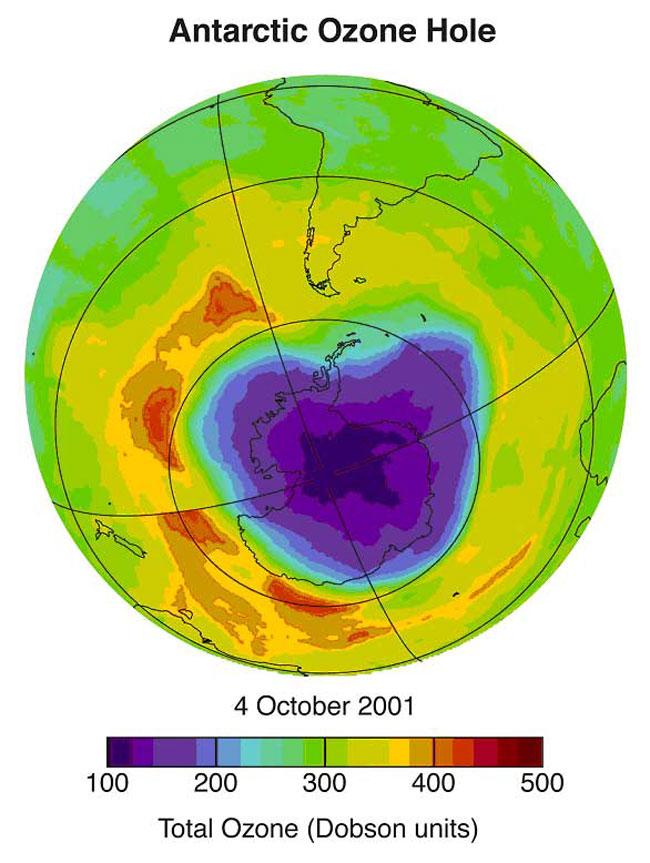The Antarctic ozone hole forms in the southern hemisphere’s spring (Sept.-Nov) following the bitterly cold and dark Antarctic winter when stratospheric ice clouds promote production of chemically active chlorine and bromine. This, in turn, leads to ozone destruction when sunlight returns in the Antarctic spring.

